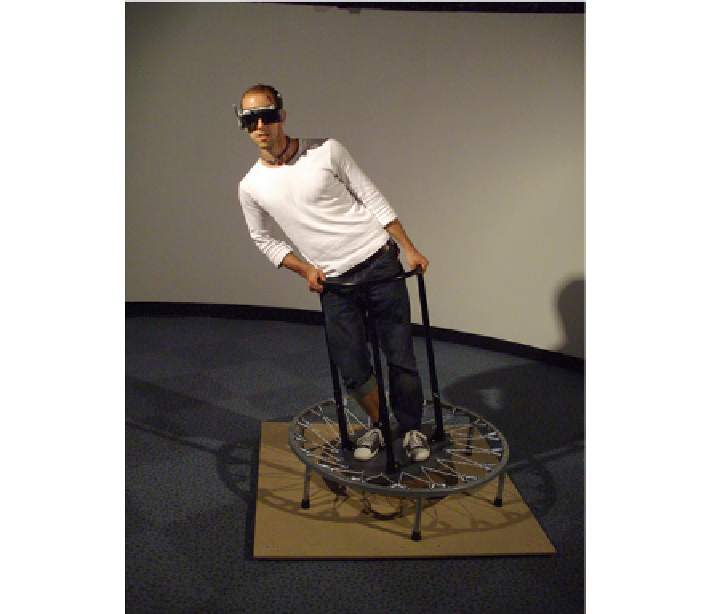Biomedical Engineering Reference
In-Depth Information
Fig. 7.14
Joyman. Courtesy of Julien Pettré, INRIA-Rennes, France
such as dance mats and the Wii Fit Balance Board; these can be made into controllers
for VEs very easily. To integrate a larger force sensing surface into a VE requires
a larger engineering effort with multiple force sensors. An example of a successful
system is the one at McGill University [
17
]. Because the floor is force sensitive
(and in this case includes a haptic display), controls can be integrated into the floor
so that the user can step on them. Other novel devices for travel include Joyman
(Fig.
7.14
)[
27
], which is based on the concept of a “human-scale joystick.” The user
stands on a platform that they tilt to control locomotion. A related system is the
Virtual Motion Controller (VMC) (Fig.
7.15
)[
45
] which measures the position of a
user standing on a plate and then moves the user when they stand on its rim. A variety
of foot-based interaction devices exist, such as the Interaction Slippers, which are
tracked and sense contact between the feet [
16
]. Finally, systems such as GAITER
(Fig.
7.16
) can track foot and leg position and movement but can also support the
user's doing actions such as kneeling and going prone [
37
].
Before moving on to discussing travel techniques themselves, it is worth analysing
what these input devices give us in terms of control input. A useful tool is the analysis
of Mackinlay et al. [
18
], which classified interaction devices based on what types of

